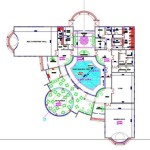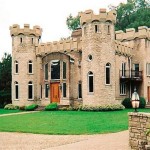Ancient Roman Bath House Floor Plan: An Architectural Masterpiece
The ancient Romans were renowned for their advanced engineering and architectural prowess, and their bathhouses are a testament to their ingenuity. Roman bathhouses, or thermae, were not merely places for bathing but also served as social and recreational centers. The floor plan of a Roman bathhouse was meticulously designed to provide a seamless and luxurious bathing experience.
Central Elements
The central element of a Roman bathhouse was the caldarium, a large, heated room used for hot baths. The caldarium was typically located at the far end of the bathhouse and had a raised platform (suspensura) that allowed bathers to sweat and relax above the heat source. The temperature in the caldarium could reach up to 40 degrees Celsius (104 degrees Fahrenheit).
Adjacent to the caldarium was the tepidarium, a warm room used for transitioning between the hot and cold baths. The tepidarium was typically decorated with frescoes and mosaics and provided a comfortable space for relaxation and socialization. The tepidarium was often used for massages and other treatments.
The third main chamber was the frigidarium, a cold room used for cooling down after the hot baths. The frigidarium was typically equipped with a plunge pool (piscina) filled with cold water. The contrast between the hot and cold baths was believed to have therapeutic benefits.
Other Facilities
In addition to the main bathing chambers, Roman bathhouses also featured a variety of other facilities. These included:
- Changing rooms (apodyteria): These rooms were used for changing clothes and storing belongings.
- Exercise rooms (palaestrae): These open-air spaces were used for exercise and recreation.
- Latrines (latrinae): These public toilets were often located in the basement of the bathhouse.
- Libraries and reading rooms: These rooms provided a quiet space for study and relaxation.
Architectural Features
The floor plan of a Roman bathhouse was designed to maximize efficiency and comfort. The buildings were typically constructed of brick and concrete and had domed ceilings that allowed for the circulation of hot air. The floors were covered with marble or tile, and the walls were often decorated with frescoes and mosaics. The bathhouses also featured advanced plumbing systems that supplied hot and cold water to the bathing chambers.
Social and Cultural Importance
Roman bathhouses were not only places for bathing but also important social and cultural centers. People of all classes and backgrounds visited the bathhouses to socialize, relax, and enjoy the various amenities. The bathhouses were often used for political discussions, business meetings, and even matchmaking. The wealthy and elite often had their own private bathhouses, while the public bathhouses were open to all citizens.
The ancient Roman bathhouse is a testament to the ingenuity and architectural prowess of the Romans. The meticulous floor plan and advanced facilities provided a luxurious and therapeutic bathing experience that was central to Roman society and culture.

Plan Of Bath House Roman Baths

The Roman Baths

Roman Bathhouse Layout Bath House Baths

Thermae Wikipedia

Roman Baths World History Encyclopedia

Architecture 318k Long Flashcards Exam 2 Images Studyblue Roman Bath House Baths Ancient

Roman Bath House At Chesters

Roman Baths Artwork Stock Image C017 7251 Science Photo Library

Ancient Roman Baths Thermae Of Caracalla Diocletian Trajan Crystalinks

Baths Of Caracalla Roman Ancient Bathing Floor Plan Thermae House Angle Text Png Pngwing








